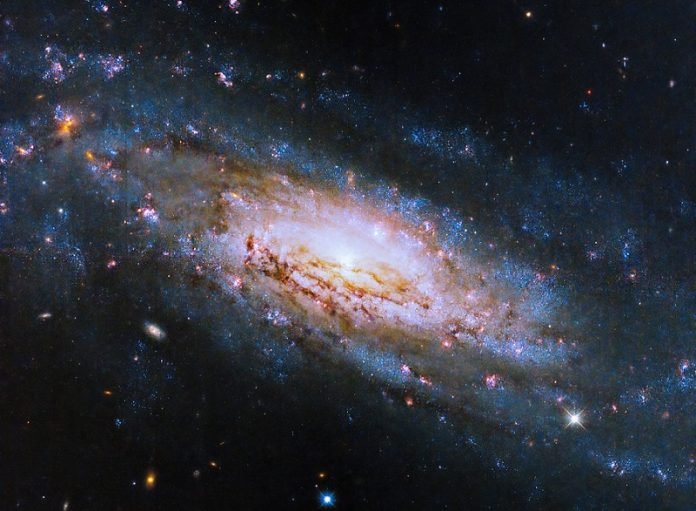
The NASA Hubble Space Telescope has given us a breathtaking view of NGC 4951, a galaxy located in the Virgo constellation about 50 million light-years away from Earth.
This galaxy is not just any ordinary galaxy; it’s a Seyfert galaxy, known for its incredibly energetic and active center.
Seyfert galaxies like NGC 4951 are fascinating because, unlike other galaxies with active nuclei, they allow us to see the galaxy itself clearly.
In many galaxies, the center is so bright that it outshines everything else, making it hard to see the galaxy’s structure. However, in Seyfert galaxies, the bright center and the rest of the galaxy can both be observed distinctly.
At the heart of NGC 4951, and indeed at the centers of most Seyfert galaxies, lies a supermassive black hole.
This black hole is the powerhouse of the galaxy, pulling in material from its surroundings.
As this matter spirals into the black hole, it heats up and emits radiation across the entire electromagnetic spectrum, lighting up the galaxy’s nucleus with incredible energy.
The Hubble Space Telescope has been instrumental in confirming the existence of these supermassive black holes.
Before Hubble was launched into orbit in 1990, black holes were just a theoretical concept.
The telescope’s observations of jets of material being ejected from these black holes and disks of gas and dust swirling at high speeds around them have provided solid evidence of their existence.
The recent observations of NGC 4951 are not just for show. They are part of a larger effort to understand how galaxies evolve and form stars.
Hubble’s detailed images provide crucial data for astronomers who are studying these processes.
This data is also being used in combination with observations from the newer James Webb Space Telescope (JWST) as part of a JWST Treasury program.
These programs are designed to gather a rich set of data from a single observation campaign that can help solve various scientific questions, offering a wealth of information for multiple research studies.
This remarkable image from Hubble not only captures the beauty of NGC 4951 but also contributes to our understanding of the dynamic processes that govern galaxies throughout the universe.



